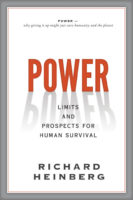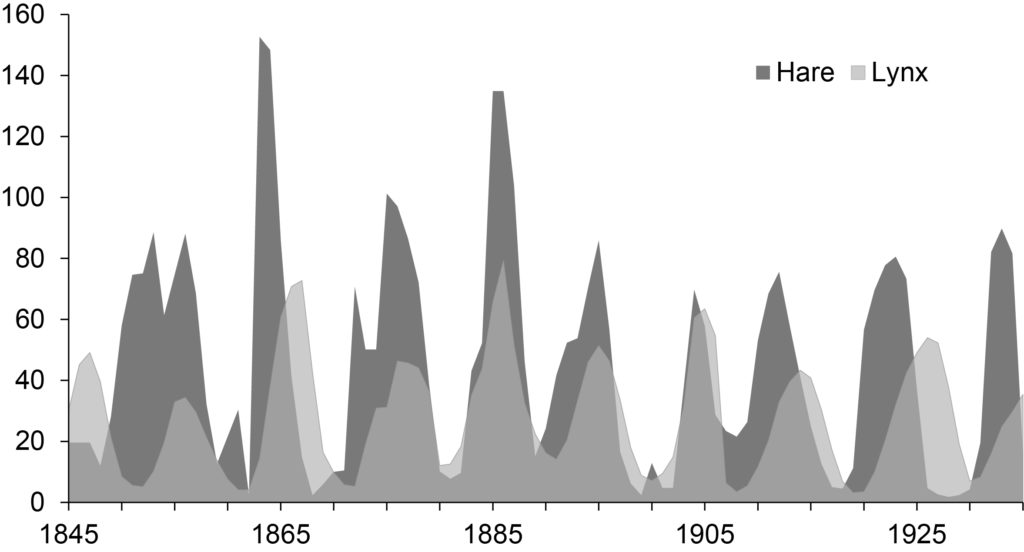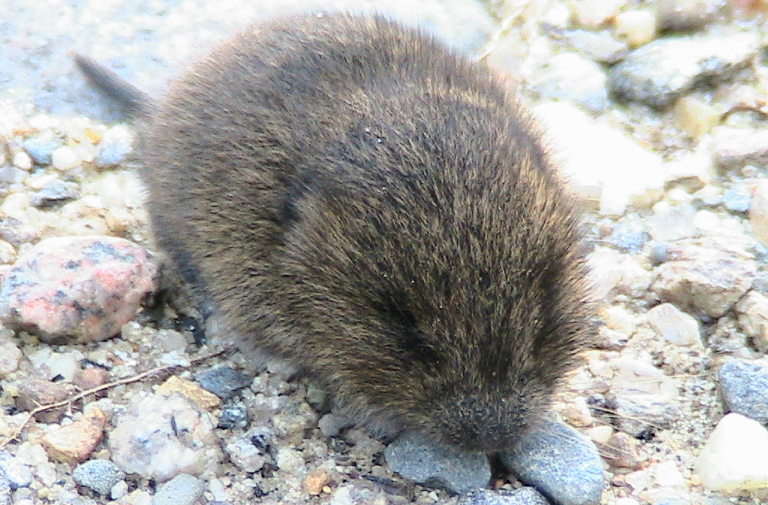 This is an abridged excerpt from Power: Limits and Prospects for Human Survival (2021) by Richard Heinberg; posted with permission from New Society Publishers.
This is an abridged excerpt from Power: Limits and Prospects for Human Survival (2021) by Richard Heinberg; posted with permission from New Society Publishers.
Every organism faces an ultimate existential limit to all its powers, in the form of death. The very idea of death can be frightening and depressing. Upon death, an entire universe of perceptions, feelings, and actions coming to focus in a particular individual vanishes forever. Why would something so awful to contemplate be inevitable?
Evolution must have a good reason for death, and it’s not hard to see. In principle, there is no reason organisms couldn’t have evolved to be immortal. Actually, a few come close. The bacterium Deinococcus radiodurans can survive intense radiation, extreme cold, and corrosive acids. And tardigrades (known colloquially as water bears), a phylum of tiny water-dwelling eight-legged segmented micro-animals, seem immune to dehydration, high heat, and even the vacuum of space. They’ve survived all five mass extinctions.
However, in order to be immortal (or nearly so), organisms have to settle for extreme limits on their powers of motion and perception, and they probably need to remain tiny. Larger organisms and more sophisticated organs inevitably accumulate injury to their tissues over time. DNA sustains damage from natural (or human-manufactured) chemicals in the environment, or from cosmic radiation or copying errors. Cells sometimes divide incorrectly, proteins can misfold, and organisms can succumb to disease or injury. Nature’s strategy is to let cells and organisms eventually die, and thus to cede the opportunity of existence to their replacements. After all, if all organisms were immortal but still capable of reproduction, they would proliferate and accumulate to the point where all possible food sources would be consumed and there would be no space for anyone new. There’s just no getting around the necessity of death. …
The extinction of a species is a form of collective death, the passing of a whole way of being. Some species manage to hang around for a very long time: cyanobacteria have been here for 2.8 billion years, and horseshoe crabs for a respectable 450 million years. But the average mammalian species persists just one to ten million years. It’s likely that extinctions—especially mass extinctions—clear the way for the evolution of new life forms, but the precise role of extinction in evolution is still under investigation. All we can say for sure is that warm-blooded species like ours tend to persist for only a very few multiples of the timespan we humans have already been here.
Another natural power limit derives from predation. Nature keeps the population levels of organisms in check via predator-prey relationships, which form the warp and weft of the food web. Predators—including micropredators, in the forms of viruses and bacteria—limit the population of prey species, but a decline in the population of prey species (due to any cause, including overpredation) can lead to a fall in the population of predators. Typically, the abundance of prey and predators is characterized by cycles, with the population peaks of predators lagging those of prey.

Figure 6.1 Predator/prey dynamics.
Credit: Based on a famous chart in Eugene Odum, Fundamentals of Ecology (W. B. Saunders, 1959). Canadian data available at http://people.whitman.edu/~hundledr/courses/M250F03/M250.html.
As a way of introducing a few concepts in population ecology that we’ll find useful in a moment, let’s consider one example—the field mouse, or vole. Its numbers in any given area vary according to the relative abundance of its food (typically small plants), which in turn depends on climate and weather. The local vole population size also depends on the numbers of its predators—which include foxes, raccoons, hawks, and snakes. A wet year can result in abundant plant growth, which temporarily increases the land’s carrying capacity for voles, allowing the vole population to grow. This growth trend is likely to overshoot the vole population level that can be sustained in succeeding years of normal rainfall; the result is an eventual partial die-off of voles. Meanwhile, during the period that the population of voles is larger, the population of predators—say, foxes—increases to take advantage of this expanded food source. But as voles start to disappear, the increased population of foxes can no longer be supported. Over time, the populations of voles and foxes can be described in terms of overshoot and die-off cycles, again tied to external factors like longer-term patterns of rainfall and temperature.
We humans killed off most of our macropredators a long time ago. Occasionally someone still gets munched by a crocodile, alligator, mountain lion, bear, or tiger, but that’s an exceedingly unusual way to go. Micropredators are a different story. Throughout human history, epidemics of infectious diseases were frequent and lethal. The Black Death of the Middle Ages temporarily reversed the growth trend of the global human population, and the influenza outbreak of 1918 killed between three to five percent of the total population at that time. As of this writing, the world is still attempting to cope with a coronavirus pandemic. And public health professionals are concerned that today we could be creating conditions for even worse pandemics in the future.
The principles of population ecology apply as much to people as to other organisms: we have managed to increase Earth’s carrying capacity for humans through agriculture and the application of fossil fuels to food production (via tractors and nitrogen fertilizers) and transportation (moving resources from where they are abundant to where they are scarce, so that more people can be supported overall). Today we are evidently in a condition of overshoot, in view of the fact that fossil fuels are finite resources and will be difficult to substitute, and also the fact that we are depleting topsoil, fresh water, and other essential natural substances. If we are indeed in an overshoot phase, we must do what we can to avert or minimize a die-off event.
This is an abridged excerpt from Power: Limits and Prospects for Human Survival (2021) by Richard Heinberg; posted with permission from New Society Publishers.
Photo By Needsmoreritalin at English Wikipedia, CC BY 3.0, https://commons.wikimedia.org/w/index.php?curid=6631649






